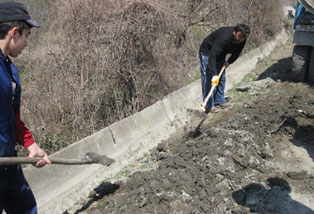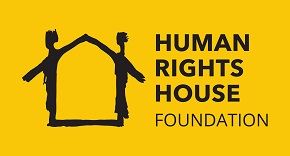Levan Sepiskveradze
Alongside with other Georgian villages bordering with Tskhinvali district, villages in Kaspi district located near Akhalgori district also turned up in the conflict zone after the war in August of 2008. Locals always had social problems but after the war lack of irrigation water and road became top problems for them. Lately, Government of Georgia started to take sharp steps to resolve this problem and locals hope their villages will be supplied with drinking and irrigation water this year.
Gogi Esashvili, resident of Tedzami gorge: “They said on TV that the new government is about to restore our irrigation system soon and of course we all appreciate this initiative. In the past, they spoke about rehabilitation of the channel in Didi Liakhvi Gorge whilst there were at least 5 channels between Kaspi and Kareli districts alongside Tskhinvali region. Nowadays, only one channel – Nikozi small channel is functioning and irrigates only two villages. Entire Shida Kartli region is bothered with this problem and particularly those villages, which were attached to the Tiripona Channel. The latter was the longest channel and irrigated almost three districts of Shida Kartli.
One of the main irrigation systems in Shida Kartli, so called Tiripona Channel has not been functioning for several years already. This system is located in the Tiriponi field in Shida Kartli starting from the left embankment of the Liakhvi River in the south of Tskhinvali. It runs to the south-east direction across the rivers Patara Liakhvi, Adzura, Charebula and ends close to the village of Patara Khurvaleti near River Kirbalula. The length of the channel is 42 kilometers.
Tezi-Okami irrigation channel was also very important irrigation system in the region; it was constructed in 1956 and supplied ten villages in four territorial entities – Okami, Samtavisi, Lamiskana and Agaiani (about 3 000 families). In June of 2010 Russian occupants selfishly blocked the channel and population of ten villages remained without irrigation water in the hot season. Despite much effort of the previous government, this channel is still blocked.
The channel outfalls from Ksani River in Akhmaji village, Akhalgori district, that is occupied by Russia. Local population faced economic crisis because of paralyzed channel.
An alternative way was found to resolve the problem – bumping station was arranged in Tvaurebi village. It was constructed on the embankment of the River Ksani and 700 mm diameter pipes were installed in two rows in the distance of 1,5 kilometers for debate power and water is bumped into the channel from the station.
Thus, the problem of irrigation system was more or less resolved in two territorial entities but two more communities are still without irrigation water.
Zaza Chincharauli, resident of Agaiani village: “During previous government, some activities were really conducted to resolve the problem but it was not enough. Many villages are still without water and people hope for the new government will pay attention to us. If large part of Shida Kartli region stays without irrigation water for a long time, it will turn into desert in 2-3 years. Shida Kartli is not Samegrelo and Imereti regions where harvest can be received without irrigation water.”
Two years ago, plots, roads and irrigation channel were sacrificed to the construction of the auto-ban alongside Gamdlistskaro village in Kaspi district. Ministry of Regional Development and Infrastructure concluded that the irrigation channel was illegal and the village is still without water. If old irrigation systems are repaired or reconstructed in Shida Kartli, Gamdlistskaro village will receive water only if the water-pipes are installed beneath the auto-ban that is quite difficult.
Recently, only one of the old irrigation systems – Nikozi Irrigation Channel was restored in the framework of the EU and Georgian government’s funded project. The reconstruction activities were carried out by the OSCE. Nowadays, 3-kilometers long irrigation system is also functioning in the bump station. Additional seventh bump was installed in the Nikozi dam, which throws water into Saltvisi channel from the Liakhvi River and about 3 000 hectares of land was to be irrigated from it. However, this system irrigates much smaller territory at this stage.
Short time ago we learned that the Ministry of Agriculture and Company of Unified Melioration Systems purchased new melioration equipment of 3, 600 million lari in the frame of the rehabilitation program of irrigation systems.
Representatives of the agricultural ministry said one of the priorities of the ministry is to improve functioning of irrigation and drainage systems in the country. They promise to have repaired about 50 irrigation channels by the time of irrigation period. Rehabilitation works will finish before the season starts that will significantly support increase in the next year harvest.
According to the Ministry of Agriculture, channels are being restored in Marneuli, Gardabani, Kareli, Kaspi and Sagarejo districts. Rehabilitation project of 15 trunk-irrigation channels was also finished. Consequently, in 2013, 70 000 hectares of agricultural land will be irrigated; about 200 specialists are employed at the rehabilitation works.
Representatives of the Agricultural Ministry state that grand rehabilitation works of irrigation systems have not been conducted in Georgia for the last thirty years. As a result, irrigation channels are out of order that negatively impact on the harvest and make agricultural works ineffective. The ongoing works, that were launched several months ago, might finish soon.




